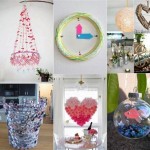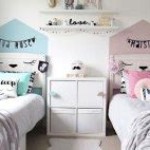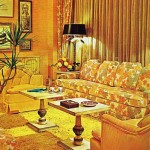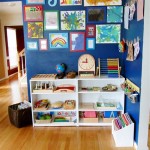Illuminating Your Living Space: A Guide to LED Decorative Lights
The living room serves as a central hub within a home, functioning as a space for relaxation, entertainment, and social interaction. The ambiance of this space significantly impacts its usability and the overall mood of the occupants. Lighting plays a crucial role in shaping this ambiance, and LED decorative lights have emerged as a prominent and versatile solution for enhancing the aesthetic appeal and functionality of living rooms.
LED (Light Emitting Diode) technology has revolutionized the lighting industry due to its energy efficiency, longevity, and design flexibility. Unlike traditional incandescent or fluorescent lighting, LEDs consume significantly less power, resulting in lower electricity bills and a reduced carbon footprint. Their extended lifespan minimizes the need for frequent replacements, making them a cost-effective and environmentally friendly choice. Furthermore, LEDs are available in a wide range of colors, intensities, and form factors, enabling a diverse array of decorative applications.
The selection of appropriate LED decorative lights for a living room requires careful consideration of several factors, including the room's size, existing décor, desired ambiance, and specific functional needs. This article provides a comprehensive overview of the different types of LED decorative lights suitable for living rooms, their applications, and key considerations for selection and installation.
Types of LED Decorative Lights for Living Rooms
The market offers a vast selection of LED decorative lights, each with its unique characteristics and applications. Understanding the various types available is crucial for making informed decisions and achieving the desired lighting effects.
1. LED Strip Lights: Also known as LED tape lights, these flexible circuits are embedded with numerous small LEDs. They are typically mounted on adhesive backing for easy installation and can be cut to length, making them highly adaptable to various spaces and shapes. LED strip lights are ideal for accent lighting, highlighting architectural features, or creating a subtle glow under cabinets or shelves. They are available in a wide spectrum of colors, including color-changing options, allowing for dynamic and customizable lighting effects.
2. LED Downlights: These recessed lights are mounted into the ceiling, providing a focused beam of light directed downwards. LED downlights are commonly used for general illumination, task lighting, or highlighting specific areas within the living room. They offer a clean and minimalist aesthetic, seamlessly blending into the ceiling. Different beam angles and color temperatures are available, allowing for precise control over the light distribution and ambiance.
3. LED Spotlights: Similar to downlights, spotlights provide a focused beam of light but are typically surface-mounted or track-mounted, allowing for greater flexibility in positioning and aiming. LED spotlights are excellent for highlighting artwork, sculptures, or other decorative elements within the living room. They are available in various styles and finishes to complement the existing décor.
4. LED Decorative Bulbs: These bulbs are designed with aesthetics in mind, often featuring unique shapes, filaments, or glass finishes. LED decorative bulbs are suitable for pendant lights, chandeliers, or table lamps, adding a touch of elegance and character to the living room. They are available in various color temperatures, ranging from warm and inviting to cool and crisp, allowing for customization of the ambiance.
5. LED String Lights: Consisting of a series of small LEDs strung along a flexible wire, LED string lights are versatile and can be used for various decorative purposes. They are ideal for creating a festive atmosphere, adding a whimsical touch to the living room, or providing subtle accent lighting. LED string lights can be draped over furniture, wrapped around plants, or hung along walls or ceilings.
6. LED Panel Lights: These thin, flat panels emit a uniform and diffused light, making them suitable for general illumination or ambient lighting. LED panel lights are often used in modern and minimalist living rooms, providing a sleek and contemporary aesthetic. They can be surface-mounted, recessed, or suspended from the ceiling.
7. LED Floor Lamps: Floor lamps provide both functional lighting and decorative appeal. LED floor lamps often incorporate unique designs and materials, adding a stylish element to the living room. They can be used for reading, ambient lighting, or highlighting specific areas.
Applications of LED Decorative Lights in Living Rooms
The versatility of LED decorative lights allows for a wide range of applications in living rooms, catering to diverse aesthetic preferences and functional needs.
1. Ambient Lighting: Ambient lighting provides the overall level of illumination in the living room, creating a comfortable and inviting atmosphere. LED strip lights concealed behind crown molding or under furniture can provide a soft, diffused glow, while LED panel lights or recessed downlights can offer a more uniform and brighter illumination. Dimmable LED lights are particularly useful for adjusting the ambient lighting to suit different activities and moods.
2. Task Lighting: Task lighting focuses on specific areas where tasks are performed, such as reading, writing, or crafting. LED floor lamps with adjustable arms or LED desk lamps provide focused illumination without creating glare or shadows. The color temperature of task lighting should be chosen carefully to ensure optimal visibility and reduce eye strain.
3. Accent Lighting: Accent lighting highlights specific features within the living room, such as artwork, sculptures, or architectural details. LED spotlights or track lights are ideal for this purpose, allowing for precise control over the direction and intensity of the light. Accent lighting can add depth and dimension to the room, creating visual interest and drawing attention to key elements.
4. Decorative Lighting: Decorative lighting serves primarily to enhance the aesthetic appeal of the living room, adding a touch of personality and style. LED decorative bulbs in pendant lights or chandeliers, LED string lights draped over furniture, or LED candles placed on shelves can create a warm and inviting atmosphere. Decorative lighting can be used to complement the existing décor and create a unique and personalized space.
5. Mood Lighting: Mood lighting is used to create a specific atmosphere or evoke a particular emotion. Color-changing LED strip lights can be used to create a dynamic and customizable mood lighting system, allowing for adjustments to the color and intensity of the light to suit different occasions or moods. Dimming capabilities are also essential for mood lighting, allowing for fine-tuning of the brightness levels.
Key Considerations for Selecting and Installing LED Decorative Lights
Selecting and installing LED decorative lights involves several considerations to ensure optimal performance, aesthetics, and safety.
1. Light Output and Brightness: The light output of an LED is measured in lumens, which indicates the total amount of light emitted. The required lumen output will depend on the size of the living room, the desired level of illumination, and the color of the walls and furniture. Darker colors absorb more light, requiring higher lumen output. Dimmable LED lights offer flexibility in adjusting the brightness levels to suit different needs and preferences.
2. Color Temperature: Color temperature refers to the warmth or coolness of the light, measured in Kelvin (K). Lower color temperatures (2700K-3000K) produce a warm and inviting light, suitable for creating a relaxing atmosphere. Higher color temperatures (4000K-5000K) produce a cooler and brighter light, suitable for task lighting or creating a more energizing environment. The choice of color temperature should be consistent throughout the living room to maintain a cohesive aesthetic.
3. Color Rendering Index (CRI): The CRI measures the accuracy with which a light source renders the colors of objects compared to natural daylight. A higher CRI indicates more accurate color rendering. For living rooms, a CRI of 80 or higher is generally recommended to ensure that colors appear natural and vibrant.
4. Energy Efficiency: LED lights are significantly more energy-efficient than traditional incandescent or fluorescent lights. Look for LED lights with a high lumen-per-watt (lm/W) ratio, which indicates the amount of light produced per unit of energy consumed. Energy-efficient LED lights will save money on electricity bills and reduce the environmental impact.
5. Safety and Installation: Ensure that all LED lights are certified by a recognized safety organization, such as UL or ETL. Follow the manufacturer's instructions carefully when installing LED lights. If unsure about any aspect of the installation, consult a qualified electrician. Avoid overloading electrical circuits and ensure that all wiring is properly insulated and grounded. Consider the placement of the lights to avoid glare or shadows that could cause discomfort or safety hazards.
6. Dimming Compatibility: If dimming is desired, ensure that the LED lights are compatible with the dimmer switch being used. Not all LED lights are dimmable, and using an incompatible dimmer switch can cause flickering, buzzing, or damage to the lights. Use a compatible LED dimmer switch specifically designed for LED lighting.
7. Style and Design: Choose LED decorative lights that complement the existing décor of the living room. Consider the style of the furniture, the color scheme of the walls and flooring, and any existing architectural features. LED lights are available in a wide range of styles and finishes, from modern and minimalist to traditional and ornate. Select lights that enhance the overall aesthetic of the room and create a cohesive and harmonious look.
8. Smart Lighting Features: Consider incorporating smart lighting features into the living room. Smart LED lights can be controlled remotely using a smartphone or voice assistant, allowing for convenient adjustments to the brightness, color, and on/off schedule. Smart lighting systems can also be integrated with other smart home devices, such as thermostats and security systems, for enhanced automation and control.
By carefully considering these factors, homeowners can effectively utilize LED decorative lights to transform their living rooms into comfortable, stylish, and energy-efficient spaces.

Why Led Lights Are Better For Room Decor The Business Standard

1pc Usb Led String Light Simple Plastic For Party Holiday Home Decoration Shein Singapore

Led Fairy Light Corst Lighting Lights 3m X 2m 200led 8 Mode Furniture Home Living Fans On Carou

Led Lights To Up Your Décor Game

Modern Changeable Led Multi Head Chandelier For Bedroom Dining Living Room Indoor Art Decor Lighting Ceiling Light

Pin By Angel Davis On House X Led Lighting Bedroom Living Room Decor Apartment

Modern Luxury Ceiling Chandelier Dining Room Home Copper Decoration Lighting Bedroom Hanging Lights Living Led Pendant Lamp Heparts

Gre Sonic 100 200 300 400 Led Fairy Lights 8 Modes Timer String For Bedroom Plus In Warm White Outdoor Garden Mains Powered Waterproof Indoor Party 200led Furniture Home Living Lighting

Modern Hanging Lamp Living Room Art Deco Cord Pendent Light For Styling Restaurant Kitchen Decor Fixtures Gold China Chandelier Pendant Made In Com







